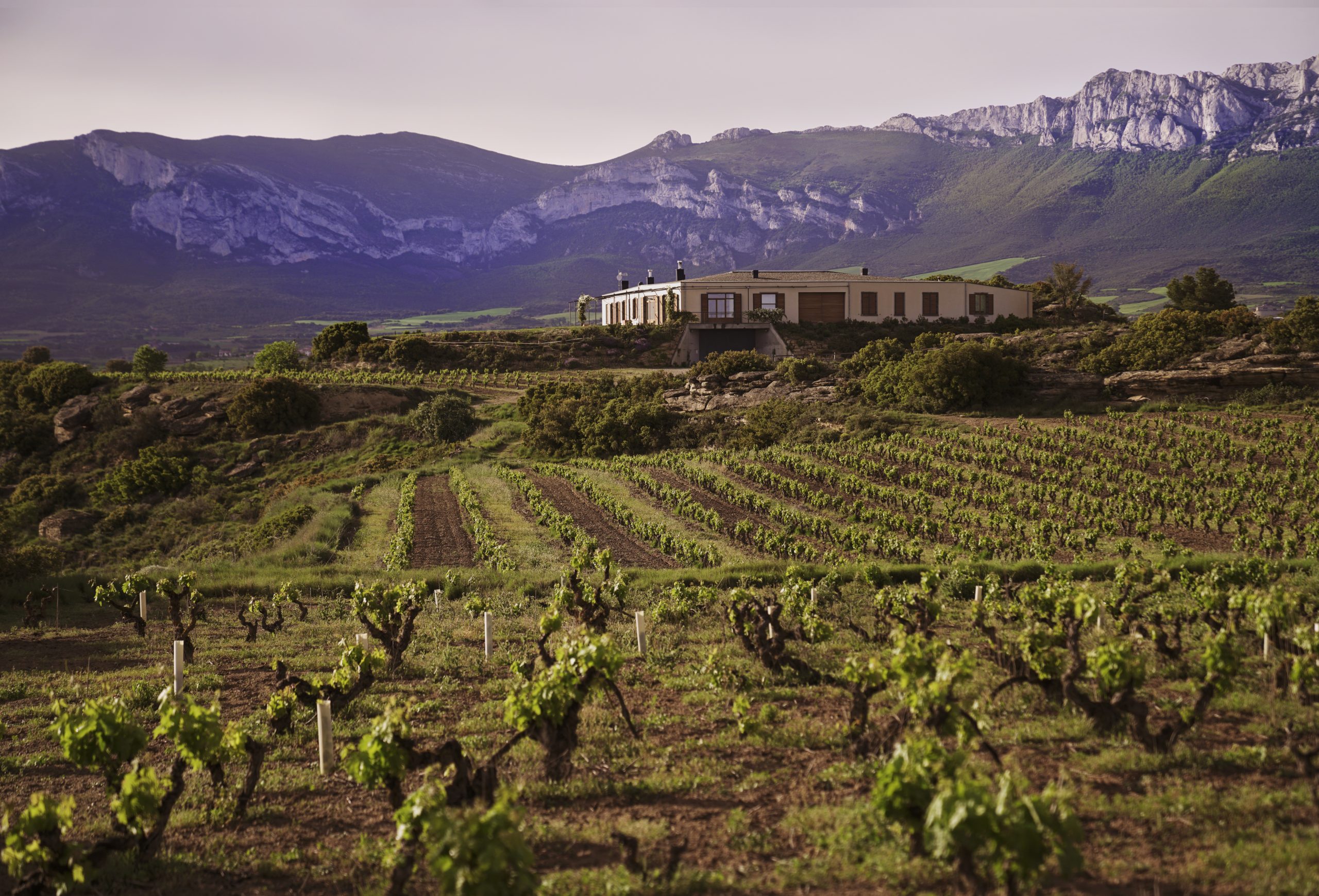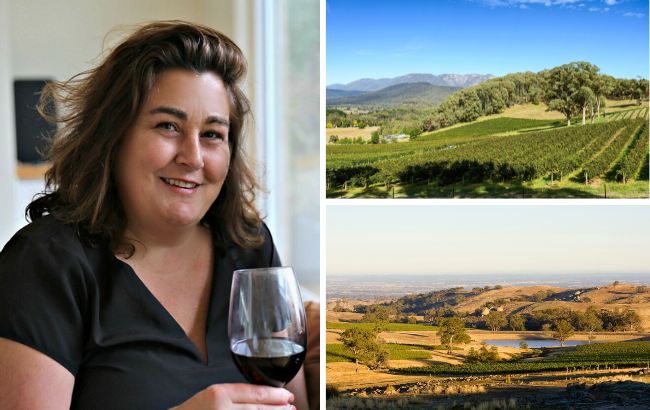Drought forcing Cape wine industry to ‘rightsize’
By Patrick SchmittThe affect of a three-year drought in the western Cape is hitting the headlines due to its affect on the local population, but what about its impact on South Africa’s wine industry?
With water rights cut by 50% in the Western Cape, wine producers are having to choose which vineyards to save. Picture source: VinPro
With Cape Town residents now reduced to 50 litres per day, and facing the prospect that taps will be turned off altogether in early May, it should come as no surprise to learn that agriculture in this part of South Africa has seen its water supply severely restricted.
Indeed, the majority of areas in the Western Cape have seen their water rights cut in half, forcing producers in the north of the region to select which vineyards to save. (Cooler valleys like Elgin or Constantia have been less severely affected).
As a result, estimates for this year’s harvest volumes are forecasted to be 20% lower in yields on average, with the bottom end of the industry affected the most – more productive vineyards for bulk wine require the most irrigation.
Furthermore, new plantings have also been on hold for some time, meaning that the nurseries in the Western Cape are full.
Speaking to the drinks business in London last week about the situation, Wines of South Africa CEO, Siobhan Thompson, highlighted the immediate challenges, but also suggested that, in the long term, the drought may benefit the wine industry in the western Cape.
“We were at a point where production was flattening and now a decline is starting to happen – the industry is pretty challenged in terms of new plantings and the affect of a lack of water – but it is not all negative, there are positives too, because the industry is rightsizing itself; there is a focus on profitability,” she said.
“Yes these are challenging times, but with that comes opportunity,” she added.
Continuing she explained that the chance to “rightsize” and “focus on profitability” had come about because the greatest impact from water shortages was being felt in the “bulk producing areas”, forcing a re-adjustment of prices upwards in a part of the market where margins are slim – or non-existent.
“Of course there will be wine, and good quality wine, but there will be less to supply in bulk at the lower end, and most definitely there will be a weighing of the scales in terms of how much is sold locally and internationally, and there will be a need to push up prices,” she stated, noting that around 60% of South Africa’s wine production is shipped in bulk, leaving 40% sold in bottle (a ratio that the industry wants to reverse by 2025).
Stock levels among wine producers were already “coming down”, recorded Thompson, but the drought, now entering its fourth year, was taking that level down from an “optimal” point in 2017 to “below optimal” this year, with a forecasted 9%, or 90 million litre shortfall, according to VinPro – a non-profit company representing 2,500 players in the South African wine industry.
So, while this year’s harvest is set to yield 20% less due to water shortages, a 9% shortfall has been predicted as producers reduce their stock levels.
“Those who pay the best price will get it [the bulk wine], and we are hoping there will be a natural price increase for South Africa, we are hoping to increase profitability,” she said, recording that the majority of producers were not covering their costs from producing wine in 2017.
Indeed, Thompson quoted figures from VinPro’s ‘industry information day’ last month in South Africa which showed that the majority of the country’s wine producers weren’t making any money.
“Round about 14% of the industry’s 3,160 producers are making a decent profit, while around 40% are breaking even, and then the rest are not making a profit, which needs to be looked at – we are seeing the cost of goods going up, whether its labour, machinery, equipment or bottles and labels, and we are not seeing price increases in sales,” she recorded.
“We will have to ask for price increases; at the end of the day we need a more profitable industry to invest back into planting and people.”
South African wine exports have dropped to 448.5 million litres in 2017 from a peak of nearly 526m in 2013. Source: WOSA
Highlighting the fact that the affect of severe water shortages this year were coming on top of a longer term decline in production, Thompson told db that the number of producers in the South African wine industry had dropped from 4,000 in 2004 to 3,160 in 2016.
“There are fewer producers due to declining profitability, and there is less area under vine,” she said.
Partner Content
She recorded that the Western Cape wine region of Robertson in particular had seen a switch from vine growing to citrus production between three to four years ago, before the period of drought began.
However, farmers who made the change may be regretting the decision: growing citrus requires more water than grapes for making wine.
Speaking more generally about the drought situation in the western Cape, Thompson said that the extreme nature of water shortages in the region should be partly blamed on humans.
“We were initially led to believe that this was the worst drought in 100 years, but it’s not… there’s been such growth in the population of Cape Town and our infrastructure has not kept up – for example, dams, desalination plants, or tapping into groundwater, so the drought is, to a certain extent, man made too.”
Looking ahead to April or early May, she said that Cape Town could be the first major modern city to run out of water.
In the meantime, she said that a lot of farms are tapping into natural underground water reserves, but that there it was vital that the water extracted was properly purified.
She added that the rains, which normally come to the western Cape at the end of May, more than a month after the grape harvest is over, will need to be heavy and sustained to fill up the dams.
She also said that the region is completing the construction of three desalinisation plants in Cape Town, two of which “should be up and running by the end of March, although they are the smaller ones,” she said.
Work has also begun to tap into a large aquifer beneath Table Mountain.
Concluding, she said that the water shortages would “separate the men from the boys”, while encouraging more work on drought-tolerate grape varieties from Spain and Italy.
When asked whether the drought would put an even greater focus on old bush vine plantings, particularly Chenin Blanc, championed so effectively by South African viticulturist Rosa Kruger, Thomson said that such vineyards were receiving more publicity, but were used for fine wine making, not volume wine production.
In general, she commented, “There is a definite move to looking at dry-land farming and drought resistant varieties – we are changing, morphing, and at a stage when we are downsizing and vineyards are being pulled out.
“We are getting ourselves right to start climbing up the curve again.”
Indeed, looking ahead to Cape Wine, which will take place from 12-14 September this year, she said that 2018’s event will “focus on the sustainability of our industry.”
Commenting on the good work being done by South African wine producers both socially and environmentally, she said, “To be a healthy and happy industry you have got to be able to invest in water management and your workers… how can you pay a living wage if you can’t even sustain yourself?
“We have to be profitable,” she concluded.





To give you a real idea of what has been happening, four years ago we had to open sluices in our dam to release water. Between that year and last, our production was down 37.5% even though we added another 8ha of vines which means that we reduced 45%. Last October, we bought R140,000 worth of water from the local council. They literally opened the taps on the local river and drained it the water our main dam. If we didn’t have a bore hole, and two dams, Lord knows where we’d be.
Edwin… are you able to dry farm ?